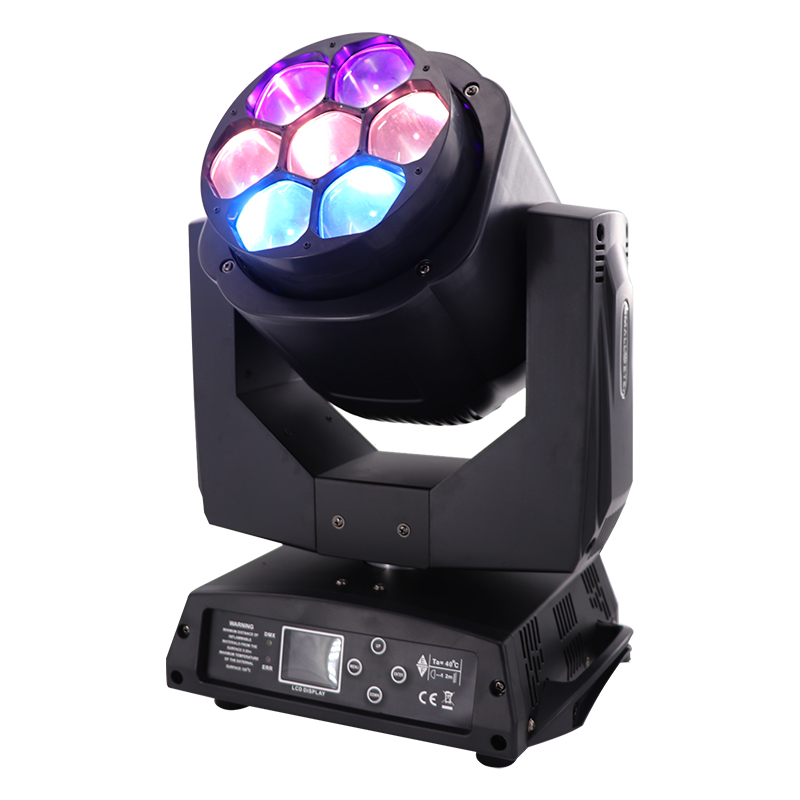Introduction
When it comes to dynamic beam manipulation in professional stage lighting, prisms play a critical role. Prism types directly impact how light is multiplied, rotated, and perceived by the audience. Among the most commonly used configurations are the 3-facet and 8-facet prisms—each offering distinct optical effects and performance advantages. Selecting the right prism fixture can significantly enhance your show design, especially when considering venue size, theme, and cue complexity.
This article explores the differences between 3-facet and 8-facet prism fixtures by comparing their technical behavior, practical applications, and how they perform in real-world scenarios. We will also highlight two outstanding products from StageLightGear.com that represent the best of each type.
Prism Optics: 3-Facet vs 8-Facet
The 3-Facet Prism
The 3-facet prism divides the beam into three sharp, symmetrical rays. This creates a defined, punchy visual that enhances focus and tight projection, ideal for solos or lead performer highlights.
Visual effect: Tight and centered beam multiplication
Programming flexibility: Fast cue response and clarity
Best for: Rock concerts, intimate stages, vocal features
The 8-Facet Prism
The 8-facet prism offers a more expansive look, multiplying beams into eight directions for fuller coverage and geometric movement. It creates rich spatial layering and is particularly impactful when combined with rotation and gobos.
Visual effect: Wide dispersion, kaleidoscopic patterns
Programming flexibility: Excellent for slow rotation and layering
Best for: EDM shows, dance stages, large-format effects
Fixture 1: 250W Beam Moving Head Light
The 250W Beam Moving Head Light is a high-output fixture that incorporates a 3-facet prism as part of its optical system. Designed for precision and intensity, this light excels at cutting through ambient lighting in large venues. The 250W white LED engine generates a bright, narrow beam that can be shaped and split using its onboard color and gobo wheels.
Thanks to the 3-facet prism, the 250W Beam Moving Head Light can multiply beams while maintaining a focused look, which is ideal for accents and transitions in cue-based programming. It supports DMX512 and RDM control, offering complete integration into professional lighting systems.
Durability is also a highlight—the 250W Beam Moving Head Light features an IP65-rated housing, making it perfect for outdoor applications without compromising on performance. Whether used in touring rigs or fixed installations, this fixture is a staple for designers who need powerful beam clarity with limited dispersion.
When used in multiples, the 250W Beam Moving Head Light can produce stunning symmetrical effects, especially when paired with sharp gobos and fast strobe sequences. It provides the clarity needed for structured light choreography and the reliability required for demanding environments.

Fixture 2: Mini 7x15W BEE EYE Rotating LED
On the other end of the spectrum, the Mini 7x15W BEE EYE Rotating LED is a compact, versatile fixture that includes an 8-facet prism system. It’s designed to create immersive lighting experiences using multibeam effects and rotation. Each of its seven 15W RGBW LEDs can be controlled individually, allowing pixel-mapped animations and rich color transitions.
What sets the Mini 7x15W BEE EYE Rotating LED apart is its zoom function and unique eye effect—a flower-like visual that rotates and shifts with prism manipulation. The 8-facet prism expands these beams into a vibrant visual matrix, transforming simple movements into layered dimensional effects.
Built with event flexibility in mind, the Mini 7x15W BEE EYE Rotating LED is ideal for stages that demand both atmosphere and technical wow-factor. It fits perfectly into DJ booths, dance clubs, theatrical events, and festival stages.
Programming the Mini 7x15W BEE EYE Rotating LED is intuitive thanks to DMX compatibility and multiple control modes. Whether you're syncing it to audio or designing architectural washes, the fixture performs reliably and creatively. It allows for smooth transitions between beam, wash, and prism effects—all in one compact package.
With its high refresh rate and excellent color rendering, the Mini 7x15W BEE EYE Rotating LED is also suitable for broadcast and camera-based applications. Its beam rotation capabilities shine in time-coded shows and pixel effects that require multi-directional light spread.

Practical Use Cases
Both fixtures excel in their respective niches. Use the 250W Beam Moving Head Light when you need sharp beam presence with minimal diffusion. It’s the tool for precision, speed, and clean visuals. Deploy it in theatrical backlighting, runway design, or synchronized aerial choreography.
For more immersive and layered environments, the Mini 7x15W BEE EYE Rotating LED provides wide coverage and expressive motion. It's perfect for venues looking to amplify depth, complexity, and spatial effect through advanced prism work.
Lighting designers often mix both fixture types in a single show—combining tight 3-facet accents with broad 8-facet sweeps for full visual dynamics.
READ MORE:





Blue Sea Lighting is an enterprise with rich experience in the integration of industry and trade in stage lighting and stage special effects related equipment. Its products include moving head lights, par lights, wall washer lights, logo gobo projector lights, power distributor, stage effects such as electronic fireworks machines, snow machines, smoke bubble machines, and related accessories such as light clamps.
Quick Links
For more questions subscribe to our email









